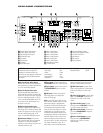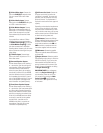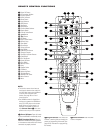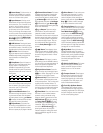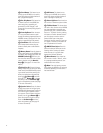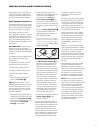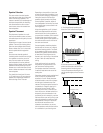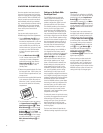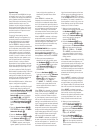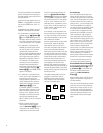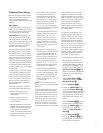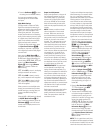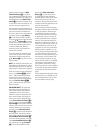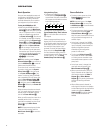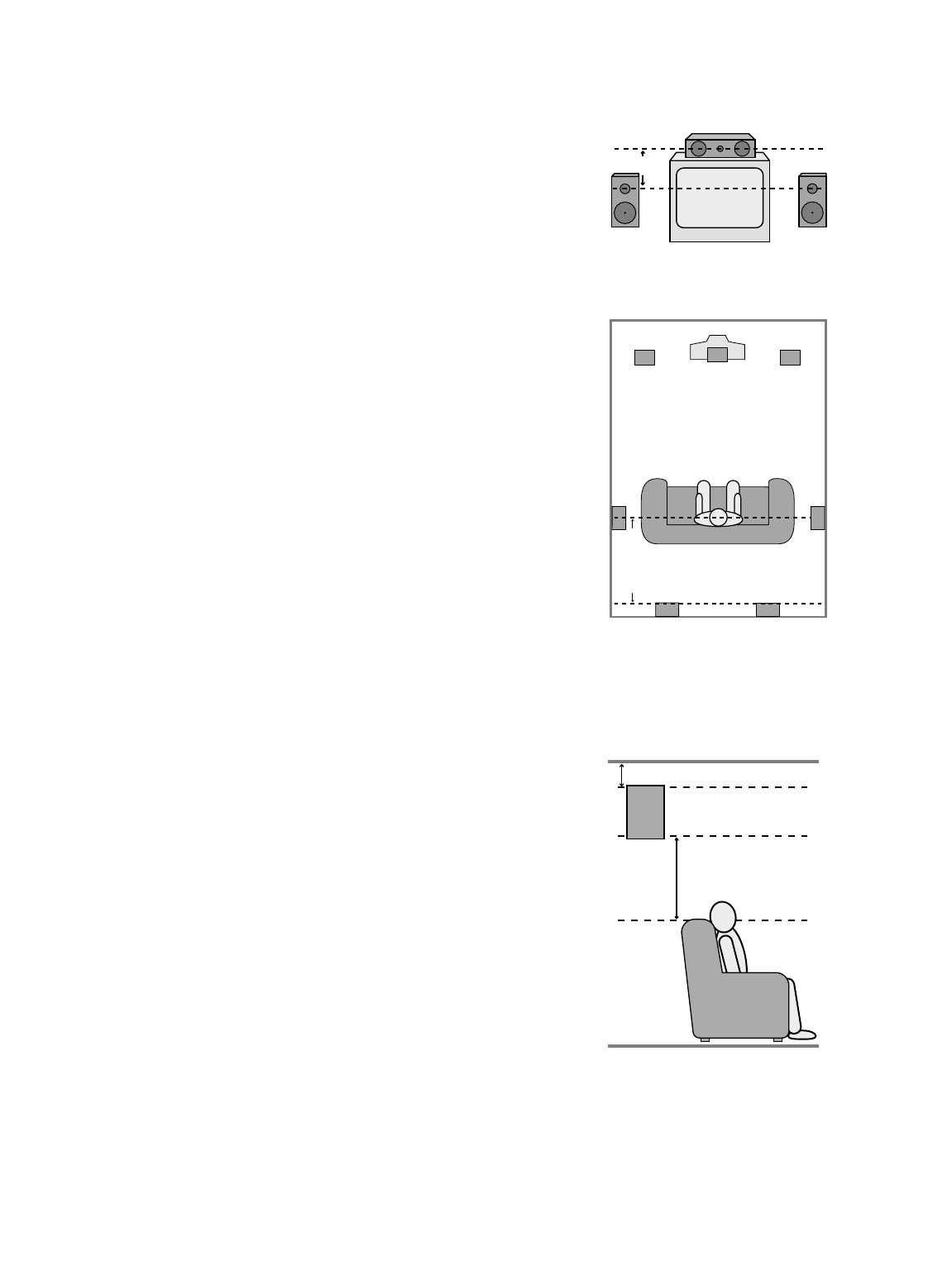
17
Speaker Selection
The same model or brand of speaker
should be used at least for the front-left,
center and front-right speakers. This
creates a seamless front soundstage and
eliminates the possibility of distracting
sonic disturbances that occur when a
sound moves across mismatched front-
channel speakers.
Speaker Placement
The placement of speakers in a multi-
channel home theater system can have a
noticeable impact on the quality of sound
reproduced.
Depending on the type of center channel
speaker in use and your viewing device,
place the center speaker either directly
above or below your TV, or in the center
behind a perforated front-projection
screen.
Once the center channel speaker is
installed, position the left-front and right-
front speakers so that they are as far
away from one another as the center
channel speaker is from the preferred
listening position. Ideally, the front-channel
speakers should be placed so that their
tweeters are no more than 60cm (2 feet)
above or below the tweeter in the center
channel speaker.
They should also be at least 0.5 meter
(1-1/2 feet) from your TV set unless the
speakers are magnetically shielded to
avoid colorings on the TV screen.
Depending on the specifics of your room
acoustics and the type of speakers in use,
you may find that imaging is improved by
moving the front-left and front-right
speakers slightly forward of the center
channel speaker. If possible, adjust all
front loudspeakers so that they are aimed
at ear height when you are seated in the
listening position.
Using these guidelines, you’ll find that it
takes some experimentation to find the
correct location for the front speakers in
your particular installation. Don’t be afraid
to move things around until the system
sounds correct. Optimize your speakers so
that audio transitions across the front of
the room sound smooth.
Surround speakers should be placed on
the side walls of the room, at or slightly
behind the listening position. The center
of the speaker should face you, and the
bottom of the speaker cabinet should be
at least 60cm (2 feet) higher than the
listeners’ ears, with the top of the cabinet
at least 170mm (6 inches) below the
ceiling.
If side-wall mounting is not practical,
the speakers may be placed on a rear
wall, behind the listening position.
The speakers should be no more than
2 meters (6 feet) behind the rear of the
seating area.
Subwoofers produce largely nondirectional
sound, so they may be placed almost
anywhere in a room. Actual placement
should be based on room size and shape
and the type of subwoofer used. One
method of finding the optimal location for
a subwoofer is to begin by placing it in
the front of the room, about 170mm
(6 inches) from a wall, or near the front
corner of the room. Another method is to
temporarily place the subwoofer in the
spot where you will normally sit, and then
walk around the room until you find a spot
where the subwoofer sounds best. Place
the subwoofer in that spot. You should
also follow the instructions of the
subwoofer’s manufacturer, or you may
wish to experiment with the best location
for a subwoofer in your listening room.
A) Front Channel Speaker Installation with
Direct-View TV Sets or Rear-Screen Projectors
B) The distance between the left and right
speakers should be equal to the distance from
the seating position to the viewing screen.
You may also experiment with placing the left
and right speakers slightly forward of the center
speaker.
At least 60cm (2 feet)
At least 170mm (6 inches) from ceiling
Center Front
Speaker
Optional Rear-Wall Mounting
TV or Projection Screen
Right Front
Speaker
Left Front
Speaker
No more than 2m (6 ft.)
when rear-mounted
speakers are used
Right Front
Speaker
Left Front
Speaker
No more than
60cm (0 – 2 feet)
Center Front Speaker




